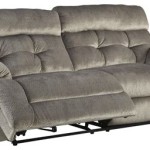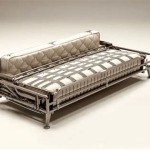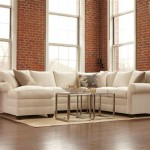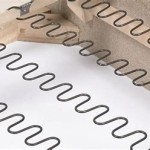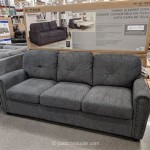Sofa Cushion Design Images: Integrating Wooden Work for Enhanced Aesthetics
The sofa, a ubiquitous piece of furniture in residential and commercial spaces, serves not only as a functional seating arrangement but also as a significant design element. The aesthetic appeal of a sofa is determined by a multitude of factors, including its frame, upholstery, and, notably, its cushions. While cushions often prioritize comfort, their design and integration with other materials, such as wood, can dramatically enhance the overall visual impact of the sofa and the surrounding environment. This article explores the interplay between sofa cushion designs and wooden work, detailing how these elements can be effectively combined to create sophisticated and visually compelling furniture.
The design of sofa cushions has evolved significantly over time. Early sofas often featured simple, utilitarian cushions, primarily focused on providing a basic level of comfort. However, contemporary design trends have shifted towards incorporating a wider range of styles, materials, and aesthetic considerations. Cushion designs now encompass various shapes, sizes, textures, and patterns, allowing for greater customization and personalization. Furthermore, the integration of wooden elements into cushion design represents a growing trend, adding a layer of sophistication and structural integrity to the overall aesthetic.
Wooden work, in the context of sofa cushion design, can manifest in several forms. It might involve exposed wooden frames that support and encircle the cushions, wooden armrests that seamlessly blend with the cushion design, or even intricate wooden inlays embedded within the cushions themselves. The choice of wood species, finish, and style significantly impacts the overall aesthetic. For example, a sofa with cushions featuring a dark walnut frame will evoke a vastly different feeling compared to a sofa with cushions supported by a light oak frame. The key is to achieve a harmonious balance between the softness and plushness of the cushions and the inherent rigidity and natural beauty of the wood.
The Role of Wood in Framing and Support Structures
One of the most common applications of wooden work in sofa cushion design involves its use in framing and support structures. The wooden frame provides the foundational structure for the sofa, supporting the cushions and distributing weight evenly. The design of this frame can be either concealed or exposed, depending on the desired aesthetic. An exposed wooden frame, often crafted from hardwoods such as oak, maple, or walnut, can add a rustic or contemporary touch to the sofa. The wood can be left in its natural state, stained to enhance its grain, or painted to complement the color palette of the cushions and the surrounding room.
The structural integrity of the wooden frame is paramount. It must be robust enough to withstand the stress of daily use and maintain its shape over time. The joints and connections within the frame should be carefully constructed to ensure stability and prevent wobbling or creaking. The design of the frame can also influence the style of the cushions. For example, a frame with a low profile and clean lines might be best suited for sleek, minimalist cushions, while a frame with ornate carvings and detailing might complement more traditional, luxurious cushions.
The placement and detailing of the wooden frame can dramatically affect the visual impact of the sofa. Consider a sofa with a continuous wooden frame that wraps around the back and sides, creating a visually cohesive and unified design. Alternatively, a sofa might feature a frame that is only partially exposed, with wooden legs and armrests providing subtle accents. The choice of hardware, such as screws and bolts, should also be carefully considered. Exposed hardware can be incorporated as a design element, adding an industrial or utilitarian touch to the sofa. However, in most cases, hardware is concealed to maintain a clean and seamless aesthetic.
Incorporating Wood in Armrests and Accents
Beyond the main frame, wooden work is frequently employed in the design of armrests and other accent elements. Wooden armrests provide a tactile and visual contrast to the soft cushions, adding a touch of warmth and sophistication to the sofa. The design of the armrests can range from simple, rectangular shapes to more complex, contoured forms. The wood can be finished in a variety of ways, from smooth and polished to textured and distressed, depending on the desired style.
The integration of wooden armrests with the cushions requires careful consideration. The armrests should be positioned at a comfortable height and angle, providing adequate support for the arms and shoulders. The transition between the armrests and the cushions should be smooth and seamless, avoiding any sharp edges or uncomfortable gaps. The color and texture of the wood should complement the fabric and pattern of the cushions, creating a harmonious and visually appealing design.
Furthermore, wood can be incorporated as accent elements in other parts of the sofa. For example, wooden inlays can be embedded within the cushions themselves, adding a touch of elegance and sophistication. These inlays might feature intricate patterns, geometric shapes, or even personalized designs. Alternatively, wooden buttons or toggles can be used to secure the cushions to the frame, adding a rustic or vintage touch to the sofa. The use of wooden accents allows for subtle but effective integration of natural materials, enhancing the overall aesthetic of the sofa.
Material Selection and Design Considerations
The selection of materials is a critical aspect of sofa cushion design, particularly when integrating wooden work. The choice of wood species, fabric type, and finishing techniques will significantly impact the overall aesthetic and durability of the sofa. When selecting wood, it is important to consider its grain pattern, color, and hardness. Hardwoods such as oak, maple, and walnut are generally preferred for sofa frames and armrests due to their strength and durability. Softwoods such as pine and cedar can also be used, but may require additional reinforcement.
The fabric used for the cushions should be chosen to complement the wood and the overall style of the sofa. Natural fibers such as cotton, linen, and wool offer a classic and timeless appeal, while synthetic fibers such as polyester and microfiber are more resistant to stains and wear. The color and pattern of the fabric should also be carefully considered. Bold colors and patterns can add a vibrant and energetic touch to the sofa, while neutral colors and subtle patterns can create a more calming and sophisticated atmosphere.
The finishing techniques applied to the wood are also essential. Staining can enhance the natural grain of the wood and protect it from moisture and wear. Painting can add a pop of color and create a more modern and contemporary look. Varnishing or lacquering can provide a durable and glossy finish, protecting the wood from scratches and stains. The choice of finishing technique should be based on the desired aesthetic and the intended use of the sofa. For example, a sofa intended for high-traffic areas may require a more durable and resistant finish than a sofa intended for occasional use.
The integration of wooden work into sofa cushion design requires a careful balance between aesthetics and functionality. The cushions should be comfortable and supportive, while the wooden elements should be visually appealing and structurally sound. The overall design should be cohesive and harmonious, reflecting the desired style and atmosphere of the space. By carefully considering the materials, design elements, and construction techniques, it is possible to create sofas that are both beautiful and functional, enhancing the overall aesthetic of any room.
Ultimately, the effective integration of sofa cushion designs with wooden work hinges on a deep understanding of both materials and their respective properties. The skilled application of design principles allows for the creation of furniture that is not only aesthetically pleasing but also durable and comfortable, standing the test of time and fulfilling the needs of its users.

Diy Couch How To Build And Upholster Your Own Sofa

Woodworking Wood Project Working For Beginner

Wooden Sofa Set Design Ideas Modern Wood Modular

Diy Couch How To Build And Upholster Your Own Sofa

Diy Couch How To Build And Upholster Your Own Sofa

Diy Couch How To Build And Upholster Your Own Sofa

Diy Couch How To Build And Upholster Your Own Sofa

Traditional Wooden Sofa Set Kuber Furniture

Diy Couch How To Build And Upholster Your Own Sofa

Modern Wood Storage Sofa Ana White
Related Posts

